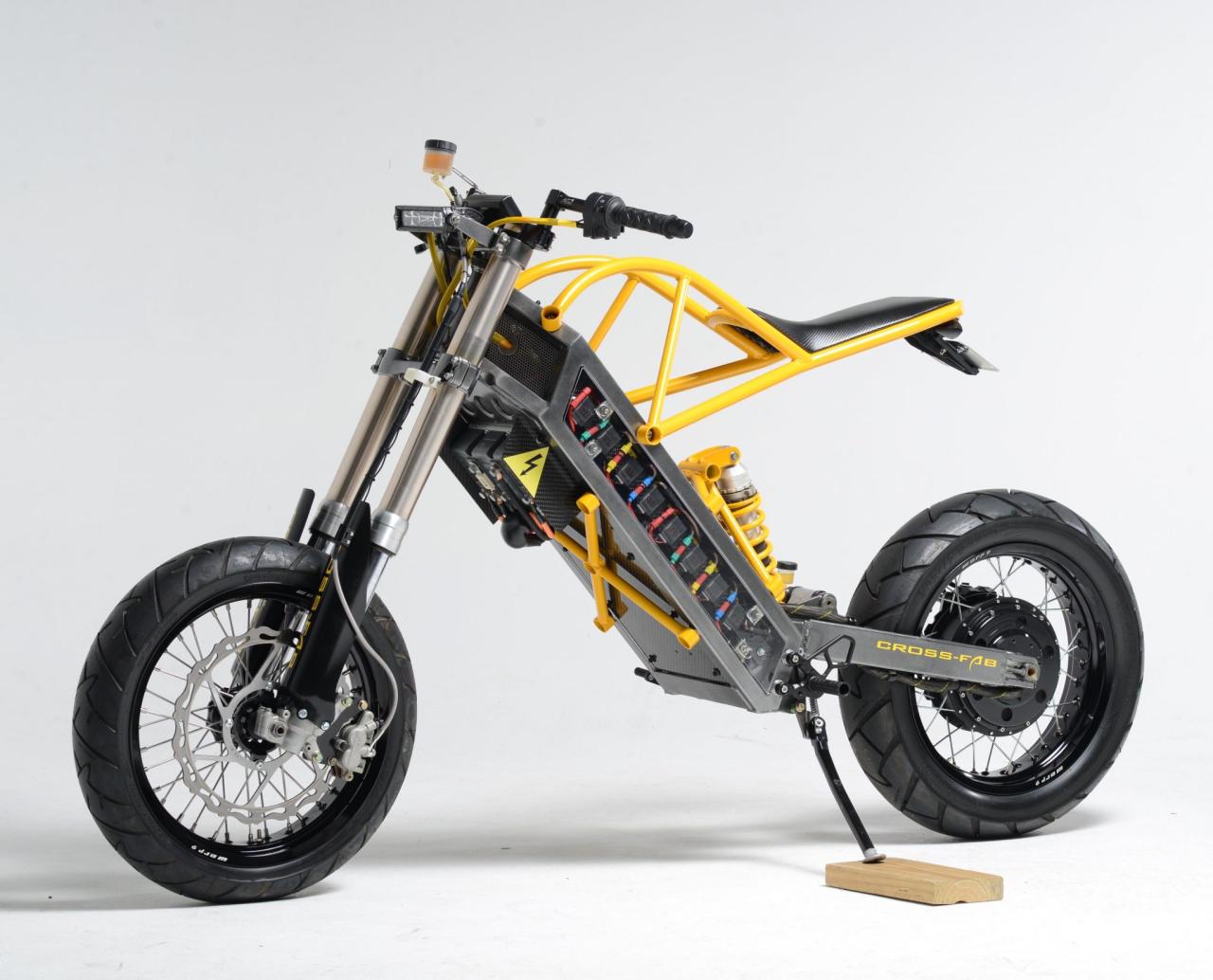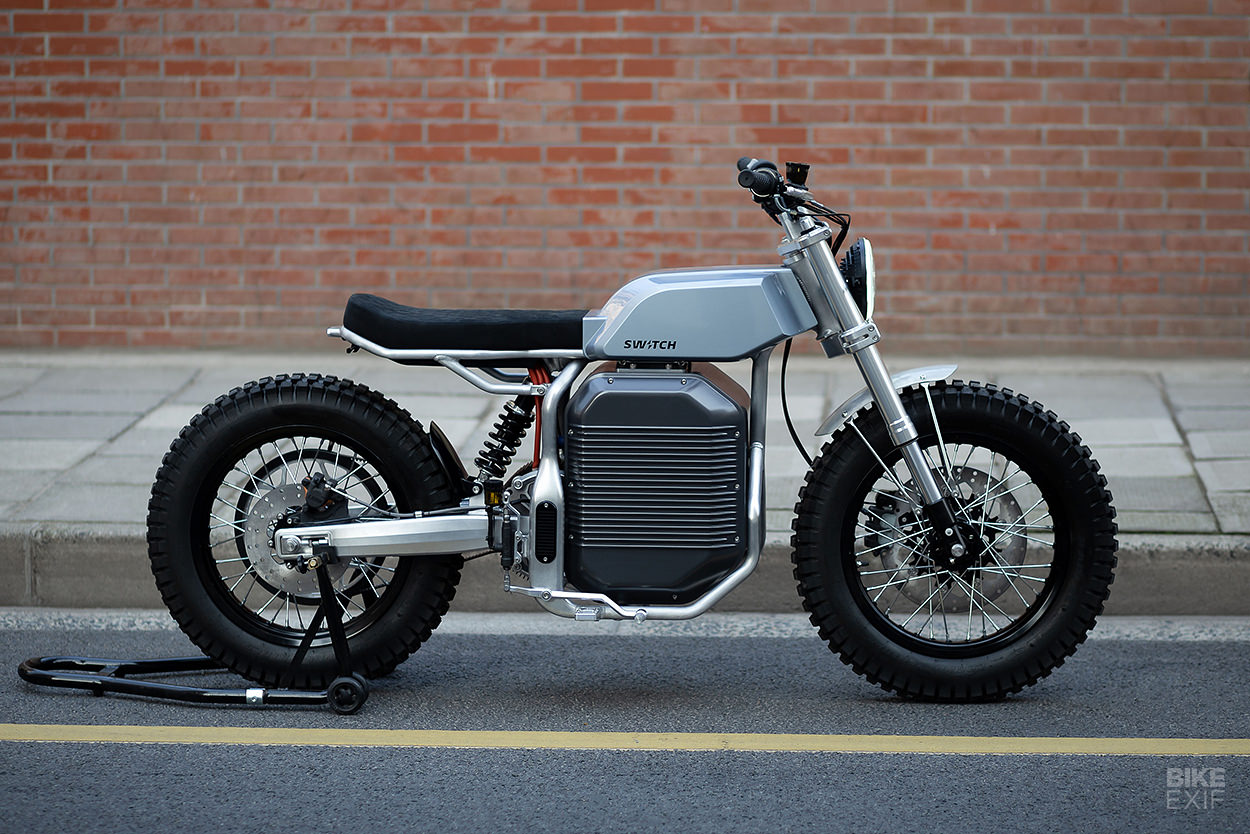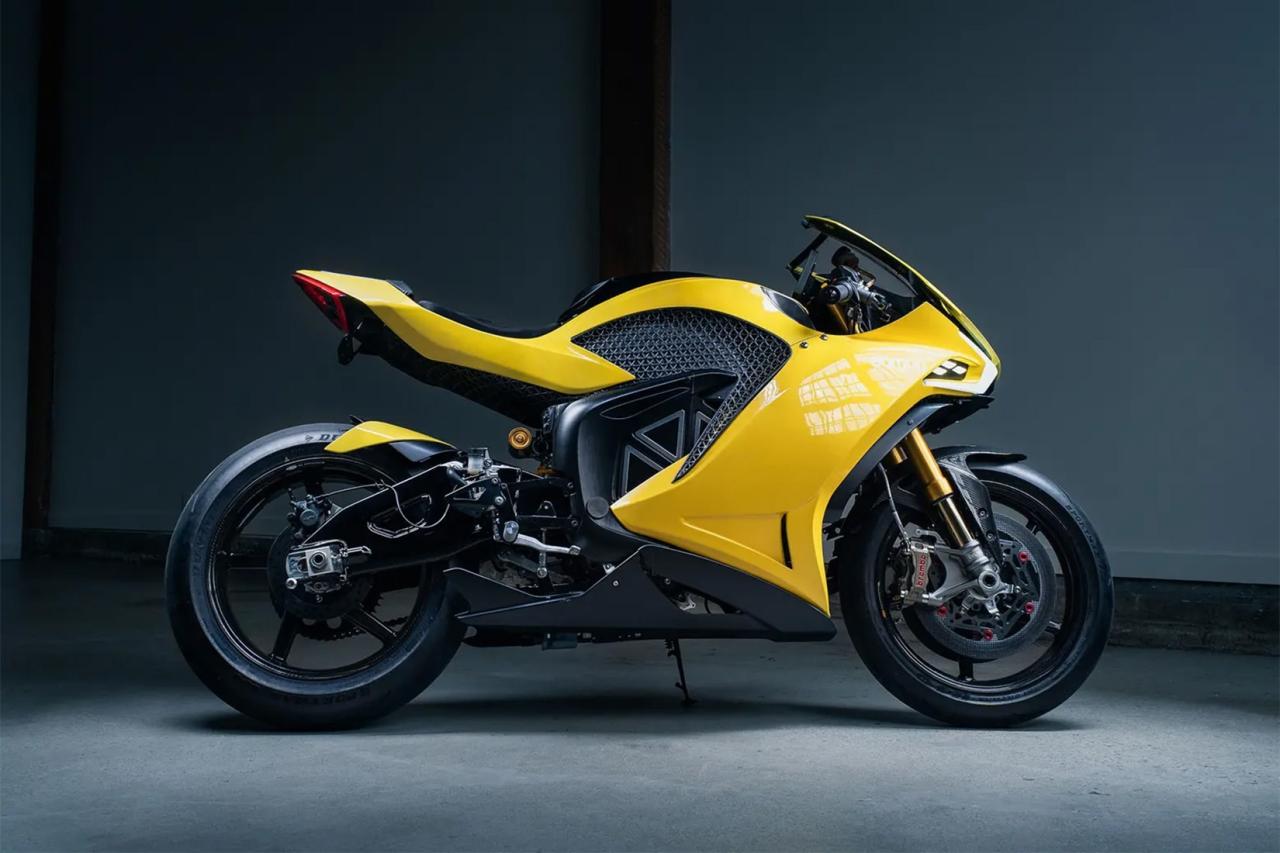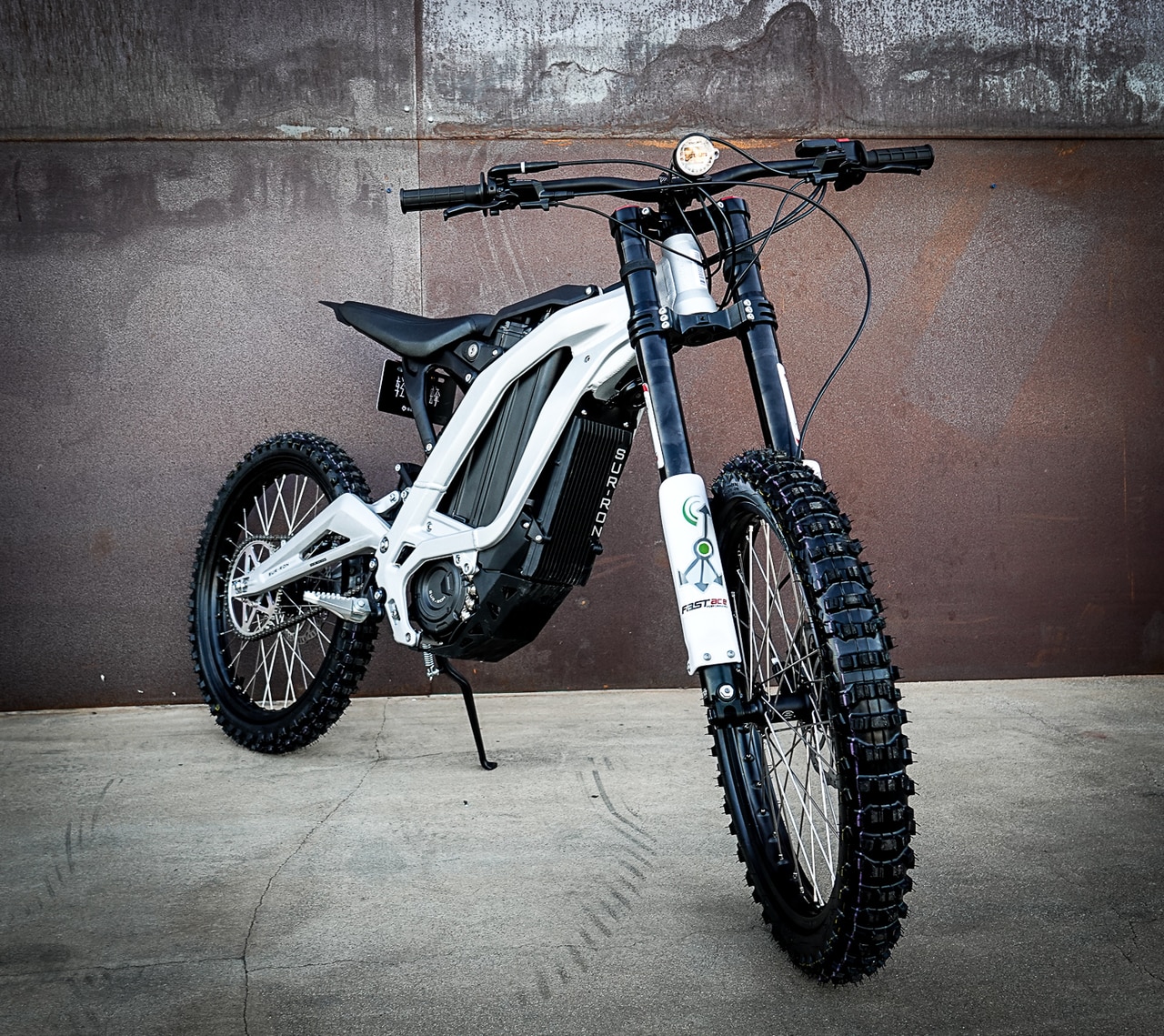The hum of an electric motor replacing the roar of a combustion engine, a sleek design replacing chrome and leather – the electric motorcycle is rapidly changing the landscape of motorcycling. This silent revolution is driven by a potent mix of environmental consciousness, technological advancement, and the allure of a thrilling new riding experience.
Electric motorcycles offer a compelling alternative to their gasoline-powered counterparts, boasting zero emissions, near-silent operation, and surprisingly powerful performance. They are more than just a trend; they represent a paradigm shift in how we think about and experience motorcycling.
From the bustling city streets to winding mountain passes, electric motorcycles are carving their own path, attracting riders of all backgrounds. This article delves into the world of electric motorcycles, exploring their advantages, technology, challenges, and the exciting future that awaits this burgeoning segment of the motorcycle industry.
The Rise of Electric Motorcycles

The electric motorcycle market is experiencing rapid growth, driven by a confluence of factors including environmental concerns, technological advancements, and shifting consumer preferences. As the world grapples with climate change, the demand for sustainable transportation solutions is increasing, and electric motorcycles offer a compelling alternative to traditional gasoline-powered bikes.
Environmental Benefits
Electric motorcycles are significantly cleaner than their gasoline-powered counterparts, producing zero tailpipe emissions. This makes them a key player in the fight against air pollution and climate change.
Types of Electric Motorcycles
The world of electric motorcycles is expanding rapidly, offering a diverse range of models catering to different needs and preferences. From sleek urban commuters to powerful off-road adventurers, electric motorcycles are rapidly gaining popularity, challenging the traditional petrol-powered models. Understanding the different types of electric motorcycles is crucial for making an informed choice.
Classification by Power Output, Range, and Intended Use
Electric motorcycles are classified based on their power output, range, and intended use, reflecting their capabilities and target audience.
- Street Motorcycles:These models are designed for everyday commuting and recreational riding on paved roads. They typically offer moderate power output and a range suitable for urban and suburban journeys. Examples include the Zero SR/F, a high-performance street bike with a claimed range of 200 miles, and the Harley-Davidson LiveWire, a stylish and powerful cruiser with a range of 146 miles.
- Off-Road Motorcycles:Built for rugged terrain and challenging trails, off-road electric motorcycles prioritize torque and power delivery for climbing hills and navigating obstacles. They often feature durable components and a more compact design. Examples include the Sur-Ron Light Bee, a popular off-road electric bike known for its agility and power, and the KTM Freeride E-XC, a high-performance electric dirt bike with a claimed range of 50 miles.
- Sport Motorcycles:These models prioritize performance and speed, offering high power output and quick acceleration. Sport electric motorcycles are designed for track days and spirited riding, often featuring lightweight construction and aerodynamic design. Examples include the Energica Ego, a powerful electric sportbike with a claimed range of 150 miles, and the Lightning LS-218, a record-breaking electric motorcycle that has reached speeds exceeding 218 mph.
Electric Motorcycle Batteries
Electric motorcycles rely on batteries to store energy and power the electric motor. Different battery technologies offer varying characteristics in terms of energy density, lifespan, and cost.
- Lithium-Ion Batteries:The most common type of battery used in electric motorcycles, lithium-ion batteries offer high energy density, meaning they can store a large amount of energy in a relatively small space. They also have a long lifespan and relatively fast charging times.
However, lithium-ion batteries can be expensive and require careful maintenance to ensure optimal performance and safety.
- Lead-Acid Batteries:While less common in modern electric motorcycles, lead-acid batteries are still used in some models, particularly older or lower-priced options. They are generally cheaper than lithium-ion batteries but have lower energy density, shorter lifespan, and slower charging times. Additionally, lead-acid batteries are heavier and require regular maintenance, including topping off the electrolyte levels.
Performance and Technology
Electric motorcycles offer a compelling blend of performance and technology, challenging the traditional paradigm of motorcycle engineering. They deliver instantaneous torque, impressive acceleration, and innovative features, making them a force to be reckoned with in the two-wheeled world.
Performance Comparison
Electric motorcycles, with their electric motors, boast impressive acceleration and torque, often surpassing their gasoline-powered counterparts. This is due to the instant power delivery of electric motors, which generate maximum torque from a standstill. While electric motorcycles may not always reach the top speeds of some high-performance gasoline motorcycles, they can still achieve respectable speeds, often exceeding the needs of everyday riders.
- Acceleration:Electric motorcycles typically have significantly faster acceleration than gasoline motorcycles, especially from a standstill. For example, the Zero SR/F can reach 60 mph in under 3 seconds, outpacing many traditional sportbikes.
- Top Speed:While electric motorcycles generally have lower top speeds compared to some high-performance gasoline motorcycles, they still achieve impressive speeds, often exceeding the legal limits in most areas. For instance, the Energica Ego+ can reach a top speed of 155 mph.
- Range:The range of electric motorcycles is constantly improving, but it remains a key factor in their adoption. Factors like battery capacity, riding style, and weather conditions can influence range. A typical electric motorcycle can cover around 100-200 miles on a single charge, with some models exceeding 300 miles.
However, charging infrastructure remains a concern in many areas, making long-distance trips more challenging.
Technological Advancements
Electric motorcycle technology is rapidly advancing, with innovations driving improved performance, efficiency, and rider experience.
- Regenerative Braking:This technology captures energy during braking and converts it back into electricity, which is then used to recharge the battery. This feature not only improves efficiency but also extends the motorcycle’s range.
- Advanced Battery Management Systems:These systems monitor and optimize battery performance, ensuring efficient energy usage and extending battery life. They also protect the battery from overheating and other potential hazards.
Electric Motors and Controllers
Electric motors are the heart of electric motorcycles, delivering power and torque efficiently. They are typically permanent magnet synchronous motors (PMSM), known for their high efficiency and power density.
- Power and Efficiency:Electric motors provide instant torque and power, resulting in impressive acceleration and responsiveness. They also operate with high efficiency, converting more energy into motion than traditional combustion engines.
- Controllers:Electric motorcycle controllers manage the flow of electricity from the battery to the motor, regulating speed, torque, and other parameters. They play a crucial role in ensuring smooth and efficient operation, optimizing performance and battery life.
Charging and Infrastructure

Electric motorcycles, like their car counterparts, rely on a robust charging infrastructure to fuel their journeys. While range anxiety is a common concern, the availability and accessibility of charging options are steadily improving.
Home Charging
Home charging is the most convenient and cost-effective way to charge an electric motorcycle. Most electric motorcycle manufacturers provide a standard Level 1 charger that plugs into a standard household outlet. Level 1 chargers offer the slowest charging speeds, typically taking several hours to fully charge a battery.
However, for most riders who primarily use their motorcycles for commuting or short trips, overnight charging at home is sufficient.
Public Charging Stations
As the adoption of electric motorcycles grows, so does the network of public charging stations. These stations offer faster charging speeds, often using Level 2 or DC fast charging technology. Level 2 chargers can typically charge a battery in a few hours, while DC fast chargers can deliver a significant charge in just minutes.
Public charging stations are becoming increasingly common at locations like:
- Shopping malls
- Restaurants
- Gas stations
- Parking garages
- Highway rest stops
Charging Time and Range
The charging time for an electric motorcycle varies depending on the battery capacity, charging method, and the motorcycle’s charging technology. Generally, Level 1 charging takes the longest, while DC fast charging is the quickest. Range limitations are also a factor to consider.
Electric motorcycles typically have a range of 50 to 150 miles on a single charge, depending on factors such as riding style, weather conditions, and terrain.
For example, the Zero SR/F, a popular electric motorcycle, has a range of 161 miles in city riding conditions. However, its range decreases to 93 miles when riding on the highway at higher speeds.
Charging Infrastructure Availability
The availability of charging infrastructure is crucial for the widespread adoption of electric motorcycles. While the number of public charging stations is increasing, it is still not as extensive as the network of gas stations for traditional motorcycles.
Organizations like ChargePoint and Electrify America are working to expand the network of public charging stations, particularly in areas with high concentrations of electric vehicle adoption.
However, the lack of charging infrastructure in rural areas or remote locations remains a challenge. As the demand for electric motorcycles grows, the charging infrastructure is expected to improve, making long-distance travel more feasible.
Cost and Ownership
The cost of owning an electric motorcycle is a key consideration for potential buyers. While initial purchase prices can be higher than traditional motorcycles, long-term savings on fuel and maintenance can make electric motorcycles a financially attractive option.
Purchase Price
Electric motorcycles are generally more expensive to purchase than their gasoline-powered counterparts. This is due to the complex battery technology and electric motors used in these vehicles. However, the price gap is narrowing as battery technology advances and manufacturing costs decrease.
- For example, the Zero SR/F, a high-performance electric motorcycle, starts at around $20,000, while a comparable gasoline-powered sportbike like the Yamaha R1 can be found for around $17,000.
- However, some entry-level electric motorcycles, such as the Super Soco TC, are priced competitively with entry-level gasoline motorcycles, starting at around $4,000.
Ongoing Costs
While electric motorcycles have lower fuel costs, there are other ongoing expenses to consider.
Electricity Bills
Electric motorcycles are powered by electricity, which is generally cheaper than gasoline. However, the cost of charging an electric motorcycle can vary depending on local electricity rates and the size of the battery.
The average cost to fully charge an electric motorcycle is around $2-$5, depending on the battery size and electricity rates.
Maintenance
Electric motorcycles require less maintenance than gasoline motorcycles. They do not have oil changes, spark plugs, or air filters. However, they still require regular tire rotations, brake pad replacements, and chain lubrication.
- Electric motorcycles have fewer moving parts, resulting in less wear and tear.
- The lack of a combustion engine eliminates the need for regular oil changes, spark plug replacements, and air filter cleaning.
Insurance
Insurance costs for electric motorcycles can vary depending on factors such as the motorcycle’s value, the rider’s driving history, and the insurance company. However, some insurance companies offer discounts for electric motorcycles due to their lower risk of accidents.
Long-Term Cost Savings
The long-term cost savings associated with owning an electric motorcycle are significant.
Fuel Costs
Electric motorcycles have no fuel costs, which can result in substantial savings over the lifetime of the motorcycle.
The average gasoline motorcycle can cost around $30-$50 per week to fuel, while an electric motorcycle will only cost a few dollars to charge.
Maintenance Costs
Electric motorcycles have lower maintenance costs than gasoline motorcycles, as they require fewer routine maintenance procedures.
- The lack of a combustion engine eliminates the need for regular oil changes, spark plug replacements, and air filter cleaning.
- Electric motorcycles also have fewer moving parts, resulting in less wear and tear.
Safety and Regulations
Electric motorcycles, while offering a thrilling and eco-friendly ride, also present unique safety considerations. The regulatory landscape for these vehicles is evolving, and understanding the associated safety protocols and legal requirements is crucial for responsible riding.
Safety Considerations
Riding an electric motorcycle requires a mindful approach to safety. The high torque and regenerative braking systems can be unfamiliar to riders accustomed to traditional motorcycles.
- Sudden Acceleration:Electric motorcycles can accelerate quickly due to their instant torque delivery. Riders should be aware of this characteristic and adjust their riding style accordingly, especially when starting or overtaking.
- Regenerative Braking:The regenerative braking system can cause sudden deceleration, potentially leading to instability or loss of control, especially on slippery surfaces. Riders should familiarize themselves with the system’s behavior and practice braking techniques to avoid surprises.
- Battery Safety:Electric motorcycles utilize lithium-ion batteries, which require proper care and handling. Overcharging, extreme temperatures, and physical damage can compromise battery performance and safety. Riders should adhere to the manufacturer’s recommendations for battery care and charging.
- Noise Reduction:Electric motorcycles are significantly quieter than their gasoline counterparts. This can be a safety concern as pedestrians and other road users may not be aware of approaching vehicles. Riders should be extra cautious and use their horn or other warning devices to ensure visibility.
Regulatory Landscape
The regulatory environment for electric motorcycles varies across regions. While many jurisdictions have adopted existing motorcycle regulations for electric models, some specific requirements are emerging.
- Licensing and Registration:Electric motorcycles are typically classified as motorcycles, and licensing and registration requirements generally follow those for traditional motorcycles. However, specific requirements may vary based on the vehicle’s power output and weight.
- Safety Standards:Electric motorcycles are subject to safety standards, including those related to braking, lighting, and emissions. These standards are generally aligned with existing motorcycle regulations but may include additional requirements specific to electric vehicles.
- Noise Regulations:Due to their quiet operation, electric motorcycles may face unique noise regulations. Some jurisdictions may require minimum noise levels to ensure pedestrian safety and visibility.
Safe Riding Practices
Safe and responsible riding practices are essential for all motorcycle riders, including those on electric motorcycles.
- Wear Protective Gear:Always wear a helmet, gloves, boots, and appropriate riding gear to protect yourself from potential injuries in case of an accident.
- Follow Traffic Laws:Obey all traffic laws and regulations, including speed limits and lane discipline.
- Be Aware of Your Surroundings:Maintain situational awareness and be aware of your surroundings, including other vehicles, pedestrians, and road conditions.
- Practice Defensive Riding:Anticipate potential hazards and be prepared to react quickly. Avoid distractions and maintain a safe following distance.
- Regular Maintenance:Ensure your electric motorcycle is properly maintained, including battery care, tire pressure, and brake function.
Environmental Impact

Electric motorcycles, with their zero-tailpipe emissions, are poised to play a significant role in mitigating climate change and improving air quality. They offer a cleaner and more sustainable alternative to traditional gasoline-powered motorcycles, contributing to a greener future for transportation.
Reduced Greenhouse Gas Emissions
Electric motorcycles eliminate greenhouse gas emissions during operation, as they do not rely on fossil fuels for propulsion. Instead, they draw power from electricity, which can be generated from renewable sources like solar and wind power. The absence of tailpipe emissions significantly reduces the carbon footprint of electric motorcycles compared to their gasoline counterparts.
A study by the Union of Concerned Scientists found that electric motorcycles emit up to 90% fewer greenhouse gases than gasoline motorcycles over their lifetime.
Air Pollution Reduction
Electric motorcycles contribute to cleaner air quality by eliminating harmful pollutants released from gasoline engines, such as carbon monoxide, nitrogen oxides, and particulate matter. These pollutants contribute to respiratory problems, smog, and acid rain.
Electric motorcycles, with their zero-tailpipe emissions, help to reduce air pollution and improve public health.
Impact of Electric Motorcycle Production
While electric motorcycles offer significant environmental benefits during operation, their production and disposal processes also have environmental implications.
Battery Manufacturing
The production of lithium-ion batteries, which power electric motorcycles, involves resource extraction, manufacturing, and transportation, all of which have environmental impacts.
- Resource Extraction:Mining lithium, nickel, cobalt, and other materials for battery production can result in habitat destruction, water pollution, and greenhouse gas emissions.
- Manufacturing:The manufacturing process of batteries involves energy-intensive processes, potentially leading to greenhouse gas emissions and pollution.
- Transportation:The transportation of battery materials and components contributes to greenhouse gas emissions.
Battery Disposal
Proper disposal of lithium-ion batteries is crucial to minimize environmental risks. Batteries contain hazardous materials that can leach into the environment if not disposed of correctly.
- Recycling:Recycling lithium-ion batteries can recover valuable materials and reduce the need for new mining. However, current recycling rates are still relatively low.
- Landfill:Improper disposal of batteries in landfills can release harmful chemicals into the soil and groundwater.
Role in Sustainable Transportation
Electric motorcycles play a vital role in promoting sustainable transportation by offering a cleaner and more efficient mode of transport.
- Reduced Fuel Consumption:Electric motorcycles eliminate the need for gasoline, reducing fuel consumption and dependence on fossil fuels.
- Renewable Energy Integration:Electric motorcycles can be powered by renewable energy sources, further reducing their environmental impact.
- Reduced Traffic Congestion:Electric motorcycles are often more agile and efficient than gasoline-powered motorcycles, contributing to reduced traffic congestion.
Reducing Carbon Footprint
Electric motorcycles contribute to reducing carbon footprint by significantly lowering greenhouse gas emissions compared to gasoline-powered motorcycles.
The adoption of electric motorcycles can contribute to a substantial reduction in overall carbon emissions in the transportation sector.
Future Trends

The electric motorcycle market is poised for explosive growth, fueled by advancements in battery technology, infrastructure development, and evolving consumer preferences. As the industry matures, it will be shaped by emerging trends in design, performance, and connectivity, offering a glimpse into the future of two-wheeled transportation.
Battery Technology and Infrastructure
Battery technology is a crucial factor driving the adoption of electric motorcycles. Advancements in battery density, charging speed, and lifespan are essential for increasing range and reducing charging time. The development of solid-state batteries promises significant improvements in energy density and safety, leading to longer ranges and faster charging times.
Simultaneously, the expansion of charging infrastructure is crucial for widespread adoption. Governments and private companies are investing in public charging stations, making it easier for riders to recharge their motorcycles on the go. The growth of home charging solutions, including smart charging technologies, will further enhance convenience and reduce range anxiety.
Autonomous Driving Technology
Autonomous driving technology is rapidly evolving, and its impact on the electric motorcycle industry is a subject of ongoing discussion. While fully autonomous motorcycles may be a distant prospect, the integration of advanced driver-assistance systems (ADAS) is already happening. Features like adaptive cruise control, lane keeping assist, and blind spot monitoring are enhancing safety and convenience for riders.
The future may see the emergence of semi-autonomous motorcycles that can assist riders with tasks such as lane changes and traffic navigation, further improving safety and reducing rider fatigue.
Emerging Trends in Electric Motorcycle Design, Performance, and Connectivity
Electric motorcycles are pushing the boundaries of design and performance, offering unique features and capabilities that traditional motorcycles cannot match. The absence of a combustion engine allows for innovative design approaches, resulting in sleek, futuristic aesthetics and optimized weight distribution.
Electric motorcycles are known for their instant torque, providing exhilarating acceleration and responsiveness. The integration of advanced electronics and connectivity features is transforming the rider experience. Electric motorcycles can connect to smartphones, allowing riders to monitor battery levels, track performance data, and access navigation apps.
Some manufacturers are even exploring the integration of features like over-the-air updates and personalized riding modes.
Comparison with Traditional Motorcycles
The rise of electric motorcycles has sparked a debate among enthusiasts and commuters alike: should they embrace the future of riding or stick with the tried-and-true internal combustion engine? This comparison examines the advantages and disadvantages of both electric and traditional motorcycles across key factors, helping you decide which type best suits your needs.
Performance and Handling
The performance and handling of electric and traditional motorcycles differ significantly, impacting the overall riding experience.
- Electric motorcycles boast instant torque, delivering rapid acceleration and a smooth, silent ride. Their low center of gravity enhances stability and maneuverability, particularly in urban environments.
- Traditional motorcycles, powered by internal combustion engines, offer a more visceral and engaging riding experience. They produce a distinctive engine sound and require skilled gear shifting for optimal performance.
Cost and Ownership
The cost of ownership for electric and traditional motorcycles varies significantly, influenced by factors like purchase price, maintenance, and fuel or charging expenses.
- Electric motorcycles, while often having a higher initial purchase price, offer lower running costs due to cheaper electricity compared to gasoline and minimal maintenance requirements.
- Traditional motorcycles generally have a lower initial purchase price but incur higher costs for fuel, maintenance, and repairs over time.
Environmental Impact
The environmental impact of electric and traditional motorcycles is a crucial consideration, especially as concerns about climate change intensify.
- Electric motorcycles, powered by electricity generated from renewable sources, produce zero tailpipe emissions, contributing to cleaner air quality and reducing carbon footprint.
- Traditional motorcycles emit greenhouse gases and pollutants, contributing to air pollution and climate change.
Target Audience and Use Cases
The target audience and use cases for electric and traditional motorcycles differ based on individual preferences, riding style, and lifestyle.
- Electric motorcycles appeal to environmentally conscious riders seeking a silent, efficient, and low-maintenance ride, particularly for urban commuting and short-distance trips.
- Traditional motorcycles attract riders who appreciate the classic riding experience, including the engine sound, gear shifting, and long-distance capabilities, making them suitable for touring and open-road adventures.
Outcome Summary
The future of motorcycling is electric, and the journey is only just beginning. As battery technology advances, charging infrastructure expands, and design innovation continues, electric motorcycles are poised to become an increasingly integral part of the transportation landscape. Whether you’re a seasoned rider seeking a new thrill or a newcomer looking for an eco-conscious mode of transportation, the electric motorcycle offers a compelling and exciting proposition.

